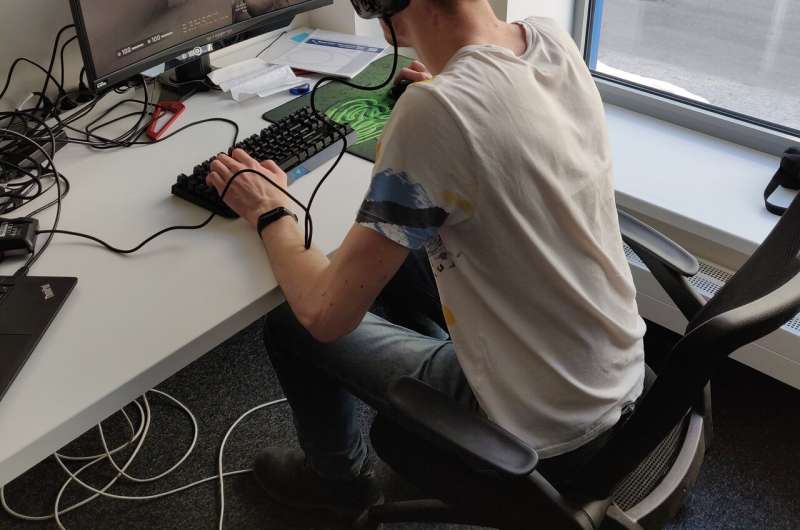Predictable eSports: Amateurs and professionals have different sitting postures

A group of scientists from Skoltech's Computational and Data-Intensive Science and Engineering Center (CDISE) have used artificial intelligence to find a connection between an eSports player's movements and skill level. Their research findings show that machine learning methods can accurately predict a player's skill level in 77 percent of cases.
In just a few years, eSports, with roots in video games for kids, has evolved into a full-fledged industry with professional teams, coaches and huge investments. As in any other sport, an eSports player can be a professional or an amateur, and telling one from another is essential for optimizing the training process.
Master's students from the Skolkovo Institute of Science and Technology (Skoltech), Moscow, Moscow Institute of Physics and Technology (MIPT) and the State University of Aerospace Instrumentation (SUAI), St. Petersburg, led by Skoltech professors Andrey Somov and Evgeny Burnaev, looked for a connection between the proficiency and body movements of eSports players seated in chairs.
"We assumed that there could be a link between a player's body movements and skill level. Also, it was interesting to look at the players' response to various game events, such as kills, deaths or shootings. We suspected that professional players and beginners would react differently to the same event," explains the first author of the study and Skoltech master student, Anton Smerdov.
The experiment involved a total of 19 players, including nine professionals and 10 amateurs, who played Counter-Strike: Global Offensive (CS: GO) for 30 to 60 minutes. Their skills were evaluated in game hours, similarly to pilots, whose skills are assessed in flight hours. The data were collected using an accelerometer and a gyroscope embedded in the chair.
"We then cut the data into three-minute sessions, assuming that three minutes were enough to understand the player's behavior and obtain a sample big enough for algorithm learning," Smerdov added.
The patterns extracted from each session were used to evaluate the players' behavior and check how intensively and how often they moved or turned around along each of the three axes and leaned back in the chair. A total of 31 patterns were obtained for each player, and the eight most important features were defined using statistical techniques. Machine learning methods were then applied to the key features. The popular random forest method displayed the best performance, correctly determining the player's skill level from a three-minute session in 77 percent of cases. Also, the results showed that professional players move around more often and more intensively than beginners, while sitting perfectly still during shootings and other game events.
Launched within the Skoltech Introduction to Internet of Things course and Skoltech Cyber Academy initiative, this research project is being further developed at the Head Kraken eSports start-up, benefiting from the grants provided by Skoltech's STRIP program and the Russian Foundation for Basic Research (RFBR).
The team led by professors Andrey Somov and Evgeny Burnaev has been studying eSports players' psycho-emotional state and physical reactions to the game using sensors and machine learning methods since 2018. The data collected and analyzed include pulse, skin resistance, gaze direction, hand movements, environmental data (temperature, humidity, CO2 level), game telemetry, and other parameters.
More information: Anton Smerdov et al, Understanding Cyber Athletes Behaviour Through a Smart Chair: CS:GO and Monolith Team Scenario, 2019 IEEE 5th World Forum on Internet of Things (WF-IoT) (2019). DOI: 10.1109/WF-IoT.2019.8767295





















